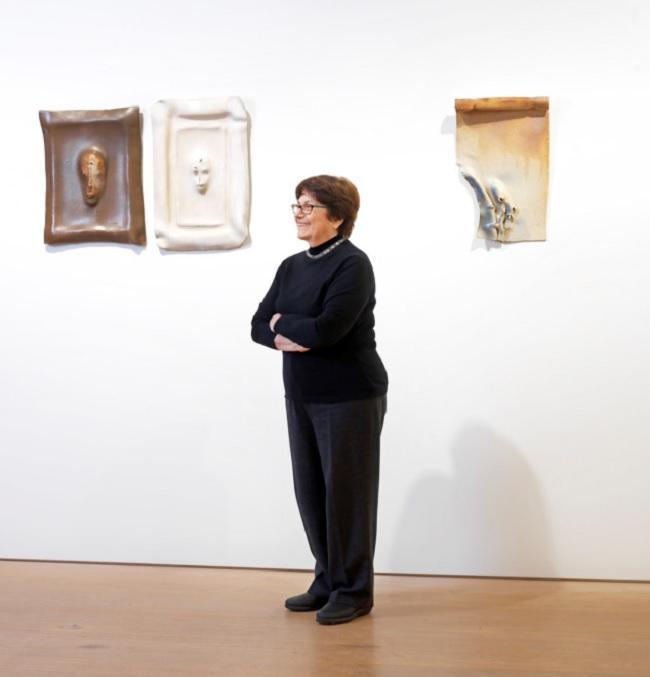
Turkey’s well-known ceramic artist, Candeğer Furtun, says that her artworks tell a story as a whole and that leaving any one of them would mean as if the story is missing a page.
“They all tell my story; they depict my life,” she said.
Her current retrospective exhibition at Istanbul’s Arter, curated by Selen Ansen, brings together her works from the 1960s to the present day. Within her works, it is possible to discover how innovative her approach to ceramics was and how she managed to explore new ways and concepts by creating ceramics.
The way she deals with history, culture and society’s problems while giving shape to ceramics is philosophy. While the viewer sees the reflection of her thoughts in her works, we see how her willingness to discover the human body, movement and stillness open a new way of understanding the material she uses. Furtun moves gently through her material, creating an object and transitioning from soft to hard material. As she does this she experiments with raw materials, producing colors, clays and glazes.
Speaking about her exhibition, Furtun said she always maintained in her studio between her artistic production and life. The exhibition, therefore, witnesses her life through her artworks. It is possible to see rich forms and textures, archival materials and documents that open up her life as an artist.
Existential point in soil
Furtun is an artist who uses soil as a way of existence. She searches for metaphysical stands in soil. Even though, her creations on the one hand reflect onto different styles of the cultural and historical heritage of different cultures, such as Turkish pottery making, Ottoman clays and ceramics and Japanese ceramics, her breakthrough in ceramics may come from the late 1960s onwards, as she abandons functionality in ceramics and interprets traditional forms as she liberates soil. As a result, the viewer sees different forms from nature and natural forms such as leaves and dorsals. This gives her an exploration of the material again and again. She rediscovers soil, and her creations become more abstract as the titles of her artworks change, such as Silent, Portrait and so on.
Furtun comes to realize as she plays with soil that she is destined to move through reality with body parts. She creates portraits and faces looking almost like abstract movements. Then her works transformed into creating more body parts in more evident ways. Post-1990s we see limbs, muscles, contours made in an unmistakable way. Instead of creating faces and portraits in more abstract ways and undefined forms, she turns into evident and defined forms in her artworks. While creating defined forms of body parts she touches the problems of society, men and women inequalities, social injustice and philosophical questions. This time, on the contrary, she depicts tangible and corporeal forms looking into problems of the society. In a way, this is her way of understanding and depicting humanity.
We see forms repeat themselves over and over. She models her hands and creates clapping hands, trying to tell a story of how society has to clap the decision-makers in the government. She creates men’s legs, as she was criticizing the position of the man in society.
In the series, titled “Legs,” her iconic works she created in 1992 were exhibited at the 15th Istanbul Biennial in 2017. Once again the viewer realizes Furtun has the ability to create a definite form but giving an abstract and philosophical stand for it. The form and the meaning coincide and combine, and the artist rediscovers her material and form again.
The exhibition can be seen at Arter until April 17, 2022.